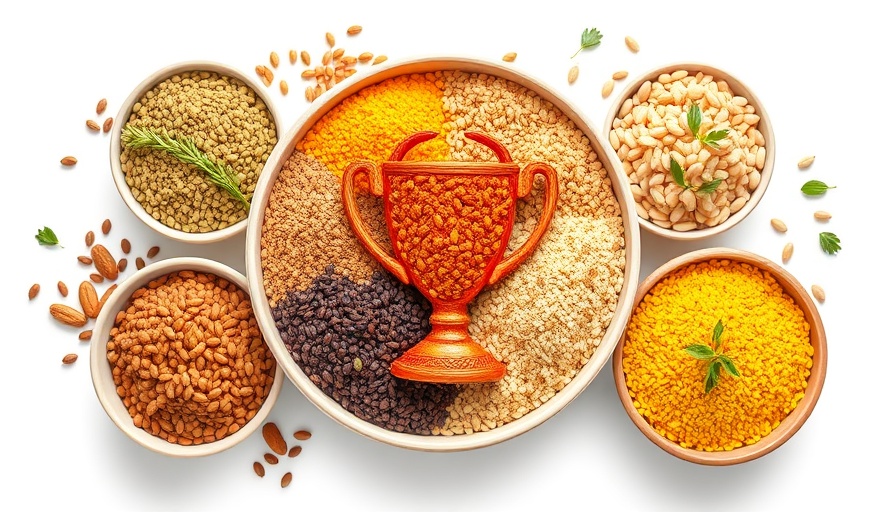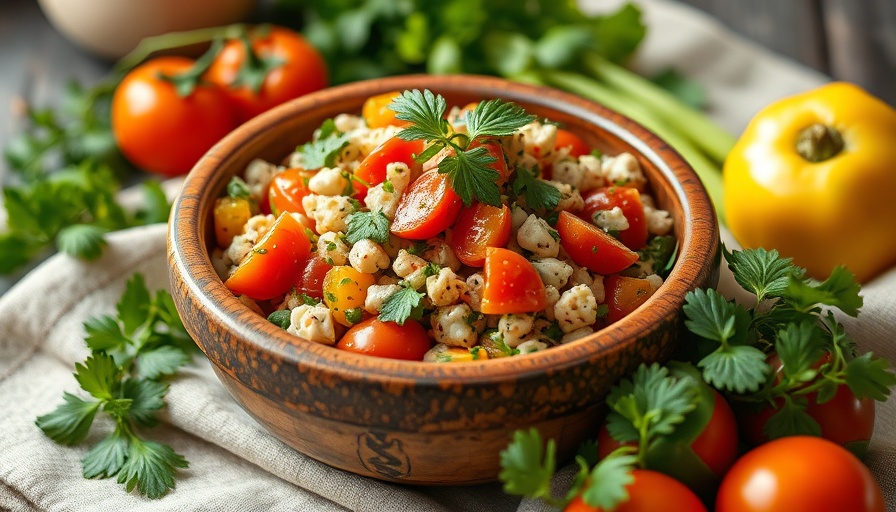
Unleashing the Power of Specialty Vinegars
In the world of culinary delights, specialty vinegars have emerged as a secret weapon for home cooks and culinary enthusiasts alike. Rich, flavorful, and health-focused, California's specialty balsamic vinegars offer much more than the standard condiment. They are a delicious alternative that can enhance a variety of dishes while being plant-based, oil-free, gluten-free, and sodium-free.
Understanding Specialty Balsamic Vinegars
What sets specialty balsamic vinegars apart from traditional options? Unlike the regular varieties that most consumers are accustomed to, these artisanal vinegars undergo meticulous crafting, often incorporating a variety of infused flavors from fruits, herbs, and spices. The result? A rich, complex taste that can transform even the simplest of meals.
Recent reviews highlight that California Balsamic boasts over 40 unique flavors, which provide an exciting spectrum of choice for those looking to amplify their culinary creations. Their thick and velvety texture allows for versatile use, making it a delightful addition to salads, roasted vegetables, and even desserts.
Creative Culinary Uses
One of the simplest yet most effective ways to showcase these specialty vinegars is by using them as salad dressings. A quick drizzle can elevate fresh greens to new heights. For those looking to get a little more adventurous, mixing the vinegar with mustard and herbs creates a vibrant vinaigrette that’s completely oil-free.
Additionally, balsamic vinegar can replace heavy dressings on baked potatoes, infusing them with a delightful tang while keeping the dish light and healthy. Roasted vegetables, like Brussels sprouts or sweet carrots, also sing when finished with a splash of this gourmet vinegar, adding a layer of flavor that enhances the natural sweetness of the vegetables.
Balsamic vinegar is also perfect for marinating vegetables. Combining sliced cucumbers or cherry tomatoes with a splash of specialty vinegar makes for a quick, refreshing side dish that’s packed with flavor.
The Health Benefits of Specialty Vinegars
Aside from their rich flavors, specialty vinegars come with numerous health benefits. With natural sugars derived from grapes and no added sugars, they uphold a heart-healthy profile. Their sodium-free nature allows individuals to add taste without the adverse health effects associated with excessive salt intake.
Moreover, made from fermented grapes with no wheat-based additives, these vinegars cater to those with gluten sensitivities, making them a fantastic option for a wide audience.
Elevate Your Meals with Unique Flavor Profiles
California Balsamic's diverse offerings include intriguing flavors such as Blazin' Habanero, Fig, and even Chocolate Orange. Each bottle presents an opportunity to experiment with new ideas in the kitchen. Imagine drizzling some Fig Balsamic over a cheese platter or using Smoked Hickory to glaze grilled vegetables.
The versatility of these vinegars means they can enhance all kinds of dishes—from savory entrees to sweet desserts. There’s truly a flavor for every palate and occasion, expanding the culinary horizons for even the most traditional eaters.
Getting Started with Specialty Vinegars
New users may wonder where to begin with these gourmet additions. A great starting point is to sample smaller bottles—California Balsamic offers a range of sizes from 3 oz to 12.7 oz. This allows you to explore various flavors without a significant commitment.
Don’t forget to use coupon code EATPLANTS for free shipping on your first order, making it a budget-friendly way to introduce gourmet vinegars into your cooking repertoire!
Conclusion: Your Journey Towards Flavorful Wellness
Explore the exciting world of specialty vinegars and discover how they can revolutionize your approach to cooking. By incorporating these flavors into your meals, not only will you enhance the taste, but you'll also promote a healthier lifestyle. With endless possibilities, these vinegars are not just condiments; they are culinary experiences waiting to happen!
 Add Row
Add Row  Add
Add 




Write A Comment